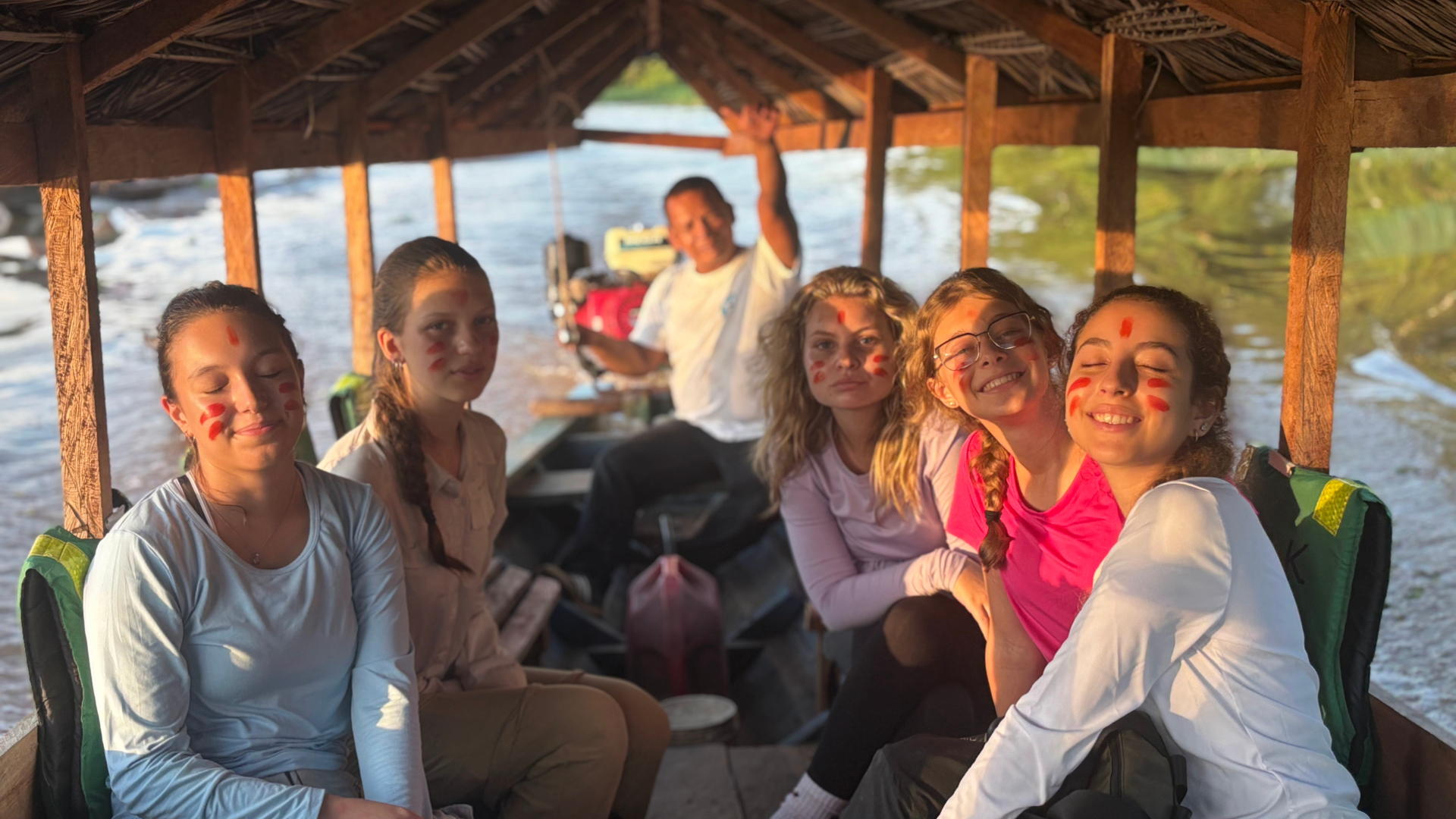Travel insights from Latin America
Author Tina Salcedo | Published on November 12th, 2025
Learning Spanish is much more than mastering verbs or pronunciation, especially because the language takes on a different flavor in every country.
That’s why an increasing number of educators are looking toward cultural immersion experiences, where students practice Spanish while discovering the traditions, values, and rhythms of local communities.
In fact, learners in immersion environments develop stronger communicative competence, intercultural awareness, and linguistic confidence compared to those in traditional classroom settings. That’s why more educators are turning to experiential programs that allow students to live, listen, and learn directly within local communities, specifically in Latin America, which has become the best alternative for immersive education thanks to their clear accents and cultural openness.
And, because this is the second most spoken language by native speakers, several countries across this continent stand out for their rich linguistic diversity and accessibility for Spanish learners, offering their own accent, rhythm, and approach to learning.
Yet some places stand out for how naturally they blend language practice with real cultural exchange:
Colombia: A Paradise for Beginners
Colombia is one of the most approachable and engaging countries for Spanish learners. Cities such as Medellín and Bogotá rank among the most welcoming for international students, with over 30,000 learners participating in exchange and cultural programs each year (ICETEX, 2023).
Locals tend to speak slowly and articulately, which makes it easier for learners to understand and replicate pronunciation. Additionally, Colombians are famously friendly and patient conversationalists, which helps learners feel comfortable practicing even with mistakes, a key factor in language acquisition.
The country’s strong focus on community-based education and storytelling also encourages immersive, real-life practice rather than rote learning.
Peru: History, Heritage, and Everyday Language
Peruvian Spanish, particularly in Cusco and Lima, is softly spoken and phonetically consistent, making it approachable for learners.
Many Peruvians are accustomed to interacting with international visitors and students, so they often adjust their speech to be clearer and more inclusive.
The coexistence of Spanish with Quechua and Aymara offers a unique linguistic awareness, learners gain perspective on how languages evolve and influence each other. This naturally builds empathy and curiosity, both essential for mastering communication in real-world contexts.
“The immersive aspect of this trip increased our students’ Spanish skills exponentially and was something the kids commented on at length….They were so happy to practice their Spanish, and the fact that they felt so connected to the Kagumu guides made the immersion more effective.” Professor Brady, Pacific Ridge, San Diego
Chile: Hands-on Learning Adventures
While Chilean Spanish is known for its fast pace and colloquialisms, it provides an excellent opportunity for advanced listening comprehension and adaptability, skills that help learners reach fluency faster.
In structured educational programs, instructors in Chile often emphasize contextual learning (through fieldwork, environmental projects, or local collaboration), which reinforces vocabulary through real-life usage. Moreover, Chileans’ hospitality and humor create a relaxed learning atmosphere, where mistakes are part of the process, not a barrier.
Ecuador: Friendly Locals to Inspire Interaction
Ecuadorian Spanish is often cited by linguists and language schools as one of the clearest and most standard forms of Spanish in the world.
Pronunciation is crisp, grammar follows textbook rules closely, and slang is minimal, ideal for beginners. People in Ecuador, particularly outside major cities, speak at a moderate pace and value polite, open communication, making interaction less intimidating. Combined with the country’s compact geography, students can quickly shift from classroom lessons in Quito to immersive experiences in Indigenous or rural communities.
México: Interact with Cultures Old & New
Mexican Spanish is globally familiar thanks to its prominence in film, media, and music, giving learners plenty of exposure outside the classroom. It’s rhythmic, expressive, and full of cultural references, making it enjoyable to learn and practice.
Teachers and host communities in educational hubs like Oaxaca and Mexico City often use interactive learning approaches such as cooking or volunteering, reinforcing vocabulary through shared experiences.
Mexicans’ warmth and enthusiasm for cultural exchange help students overcome fear of speaking and develop confidence naturally.
Why Language Learning Through Travel Works
Immersive travel allows students to learn Spanish in real contexts, where mistakes turn into laughter and lessons turn into memories. It fosters confidence, empathy, and global awareness.
At Kagumu Adventures, we partner with local guides, families, and educators to create programs that go beyond tourism. Every trip connects students with communities that welcome curiosity and dialogue.
Ready to make Spanish part of your next educational journey?
Discover our immersive learning programs across Latin America → https://kagumuadventures.com/school-trips-in-latin-america/

